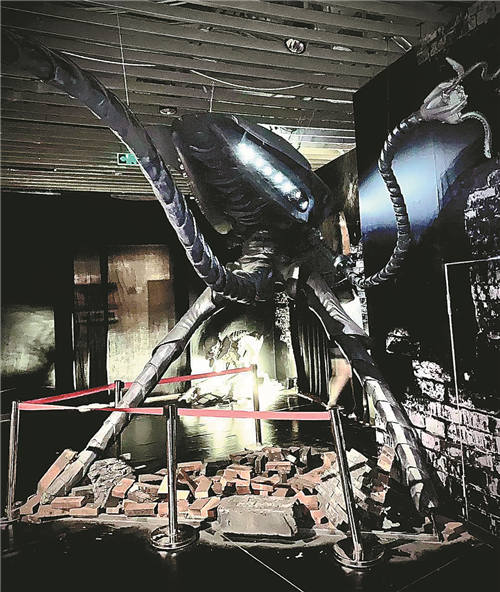Visiting Mars in Beijing
 0 Comment(s)
0 Comment(s) Print
Print E-mail China Daily, August 30, 2021
E-mail China Daily, August 30, 2021

Looking out of a giant window and smaller side one reveals realistic scenes of the aliens' three-legged war vehicles attacking a farm, replete with explosions and fires.
The Naked Eye 3D Rocket Show displays the rockets, probes and rovers that humans have sent to the red planet as well as other extraterrestrial destinations.
Mars captivated the public's imagination this year with NASA's Curiosity rover and China's Tianwen 1 probe. Tianwen 1 was delivered by the Long March 5, which also brought the lunar-sample return probe Chang'e 5 back to Earth. It has the second-highest carrying capacity, and is able to transport 6 tons to Mars and 9 tons to the moon.
China became the second country to land a rover on the fourth planet from our sun earlier this year. The vehicle's name, Zhurong, comes from a mythical fire deity, since the Chinese name for Mars translates as "fire planet".
Red Homeland features a model of a hypothetical colony. Scientists believe residents should live underground, melt subterranean ice, and grow wheat and potatoes.

Martian Wonderland charts the planet's geography, including its white polar ice caps; the 4,300-kilometer Valles Marineris, which is our solar system's largest canyon; and the Olympus Mons volcano that juts three times higher than Everest.
The namesake hall, Mars 2035, takes its name from the fact that is when the planet will be closest to ours since 2003.
Previous oppositions-the term for when Mars and the sun are on directly opposite sides of our planet-were periods of discovery, especially in the early days of telescopes. In fact, it was during the opposition of 1877 that Italian astronomer Giovanni Schiaparelli detected the first "canals".
Indeed, we've learned a lot since then.
And Mars 2035 entices us to wonder what else we'll learn about the red planet and cosmos over time and space.






Go to Forum >>0 Comment(s)